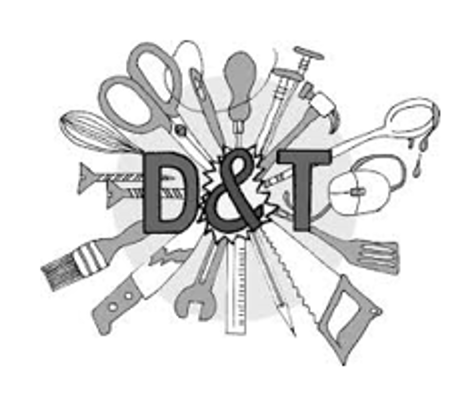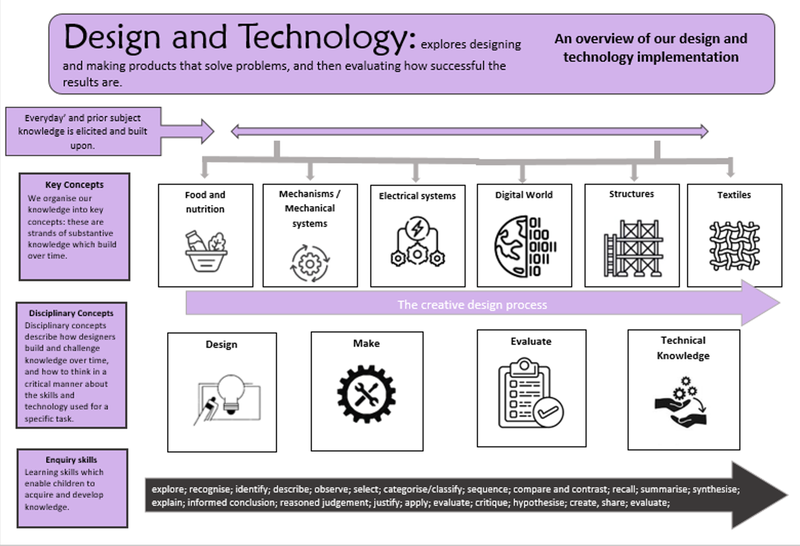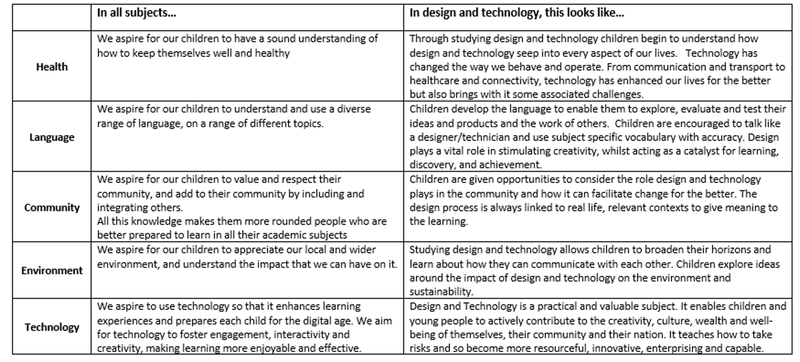Design and Technology
D&T Lead: Katherine Green

What is Design and Technology?
Design and technology is an inspiring, rigorous and practical subject. Using creativity and imagination to design and make products that solve real and relevant problems within a variety of contexts, considering the needs, wants and values of the user. Design and Technology has clear links with science, mathematics and computing and is underpinned by a clear sequence of development: design, make and evaluate. Through the study of Design and Technology, children combine practical skills with an understanding of aesthetic, social and environmental issues, as well as functions and industry. This allows them to reflect on and evaluate past and present technology, it's uses and impacts.
Our Curriculum Intent
The Design and Technology Curriculum at Trent Young’s prepares children to deal with tomorrow’s rapidly changing world. It encourages children to become independent, creative problem solvers and thinkers as individuals and part of a team. It enables them to identify needs and opportunities and to respond to them by developing a range of ideas and by making products and systems. Through the study of Design and Technology, children combine practical skills with an understanding of aesthetic, social and environmental issues, as well as functions and industry. This allows them to reflect on and evaluate past and present technology, it's uses and impacts. It is the intent of Trent Young’s for Design Technology to be taught in all classes through at least one age appropriate topic per term, which includes one topic relating to food each year.

Implementation
The Design and technology National curriculum outlines the three main stages of the design process: design, make and evaluate. Each stage of the design process is underpinned by technical knowledge which encompasses the contextual, historical, and technical understanding required for each strand.
Teaching sequences cover these 4 strands:
• Design
• Make
• Evaluate
• Technical knowledge
We have chosen to use Kapow to support the delivery of the curriculum and to further develop the teachers’ own subject knowledge. There are 6 key areas of focus for our DT Curriculum. Kapow’s Primary’s Design and technology scheme has a clear progression of skills and knowledge within these strands and key areas across each year group.
• Cooking and nutrition
• Mechanisms/ Mechanical systems
• Structures
• Textiles
• Electrical systems (KS2 only)
• Digital world (KS2 only)
Units are designed, so pupils respond to design briefs and scenarios that require consideration of the needs of others, developing their skills in the six key areas.
Each of our key areas follows the design process (design, make and evaluate) and has a particular theme and focus from the technical knowledge or cooking and nutrition section of the curriculum. Learning follows a spiral curriculum, with key areas revisited again and again with increasing complexity, allowing pupils to revisit and build on their previous learning.
Lessons incorporate a range of teaching strategies from independent tasks, paired and group work including practical hands-on, computer-based and inventive tasks. This variety means that lessons are engaging and appeal to those with a variety of learning styles. Lessons are adapted to ensure that they can be accessed by all pupils and opportunities to stretch pupils’ learning are available when required.
Curriculum drivers

